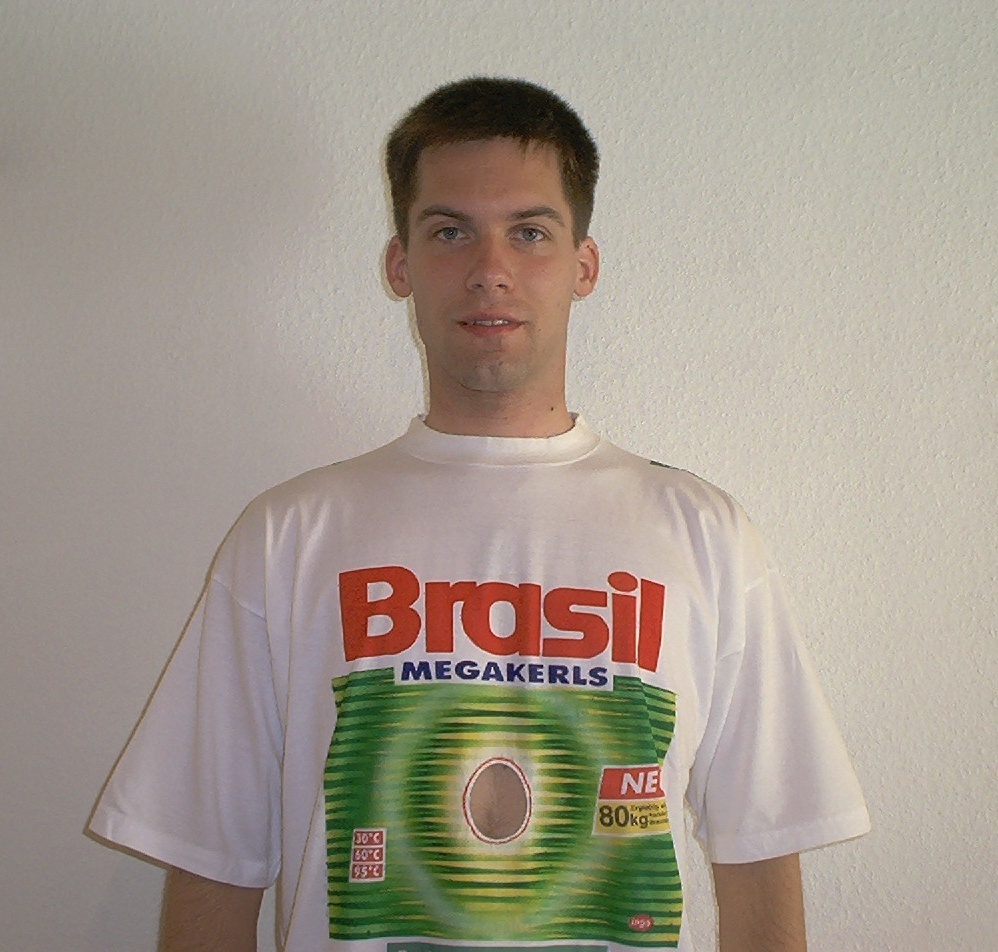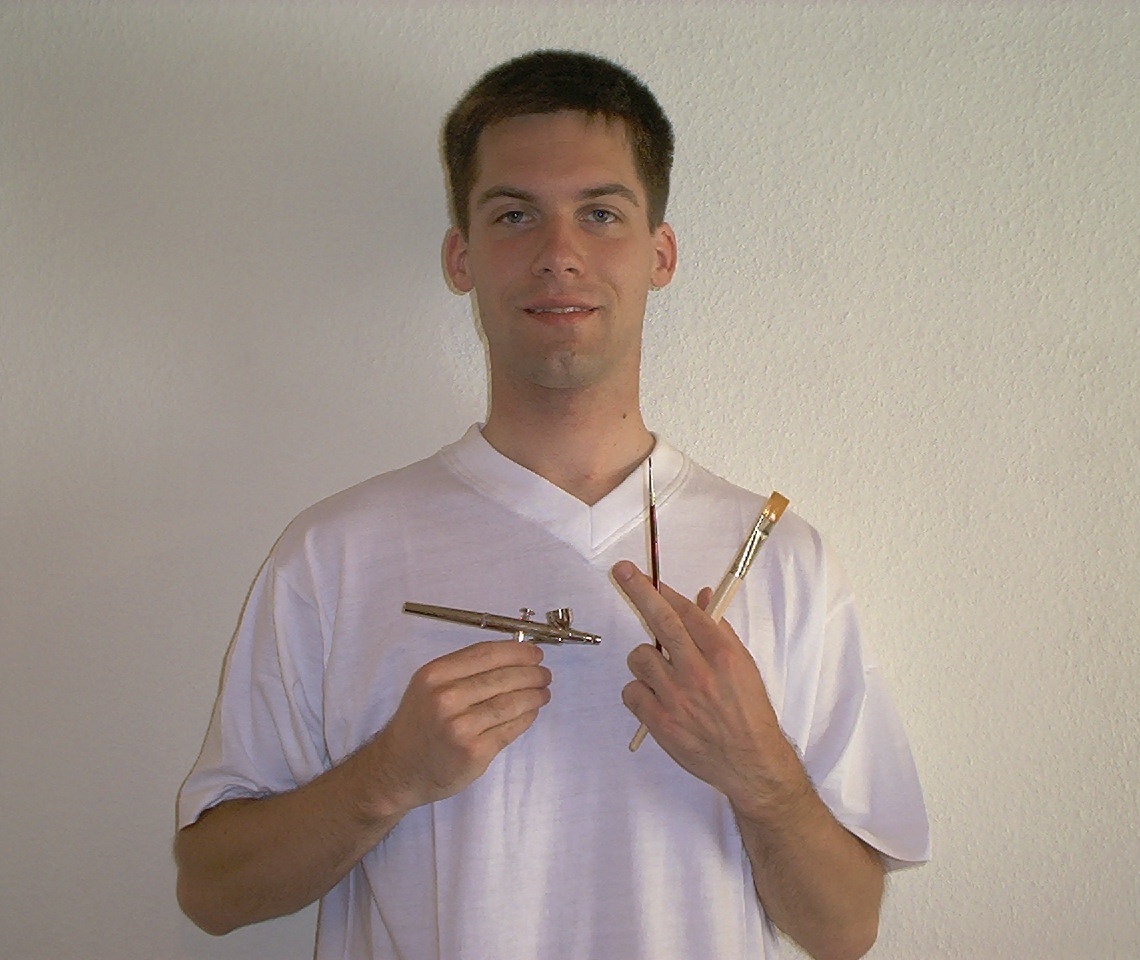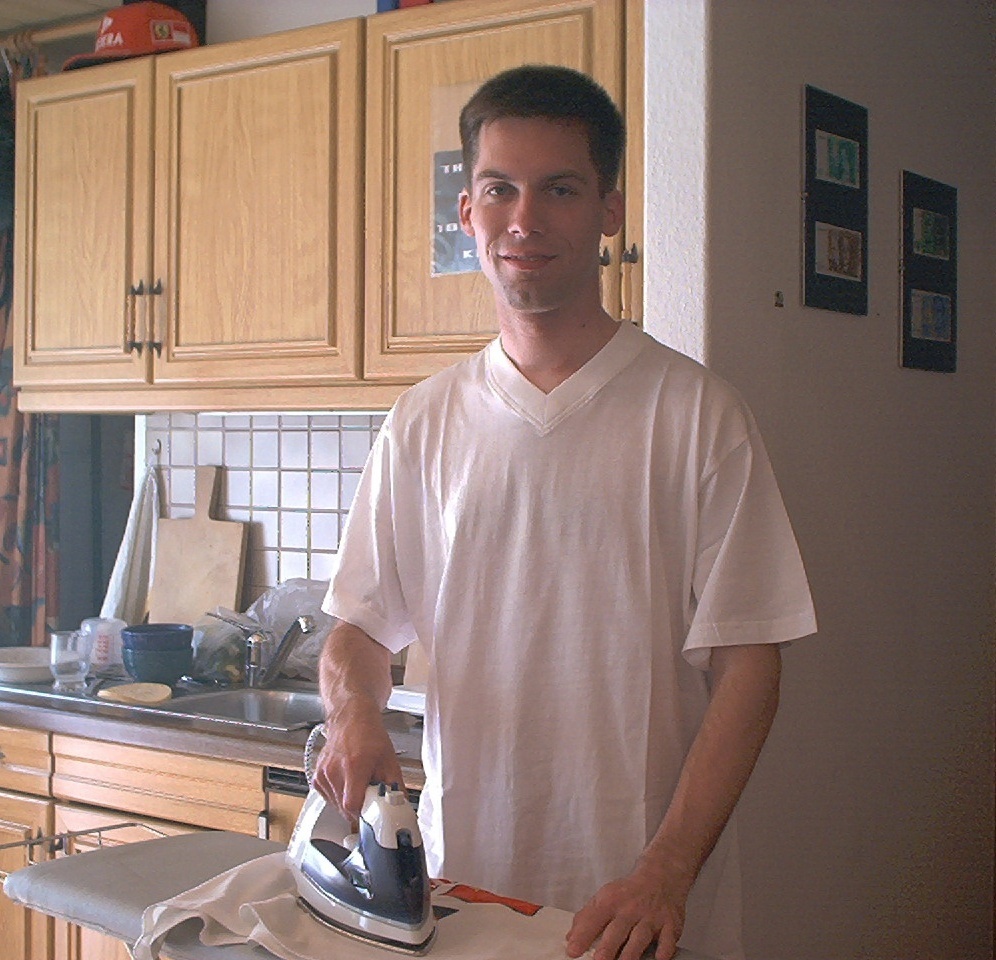Why textile painting?
I had one crucial experience when I bought my first T-shirt. It was by Diesel™; the monochrome company logo was printed on the front. I asked myself why I had spent most of the money not for the T-shirt, but for the company logo. When I consciously had a look at other T-shirts, I realized that most motives are really silly. They typically combine an abstract logo with some empty English "buzzwords", like "simple basic line" or "cotton casual wear".
I realized that it's not very difficult to come up with T-shirt designs, and I already had some ideas in my mind. Thus, I decided to mock the industry and start creating my own inexpensive T-shirt designs.
This is one of my favorite designs that make fun of industrial products, in this case detergent powder.

How did it all begin?
In the beginning... there was a set of Pelikan™ textile paint my mother got as a present. She did not use it, just stored in the cupboard, and so she gave it to me when I showed some interest in it. I made my very first experiments on a cotton shopping bag and an old jeans, using clipart motives from my new PC.
For planning and design, I have been using my Personal Computer extensively. For painting, I rely on a set of brushes and my airbrush.

How did it develop into so many projects?
At first, I painted mainly on old jeans (that cloth is easy to handle due to its thickness and sturdiness), using only the few basic colors I had. Then I painted some (still mostly monochrome) motives on T-shirts. With the Barcode project, I first applied advanced techniques like various stencils.
On Christmas 1993, I got an airbrush set from my parents (an investment of 200 EUR that was well worth it). With the airbrush, my focus changed to blank white T-shirts, and I learned to work with colors, creating various hues and shades. Subsequently, I used the airbrush in most of the projects in the 1995-1998 timeframe. In Winter 1998, I somehow lost interest in painting. Half a year later, I revived my passion with a come-back of painting with conventional brushes. This change of tools reflects the different circumstances resulting from a full-time job: Airbrushing projects usually require an entire day (setting up the stencils and environment, painting, cleaning), while conventional painting requires much less preparation, so that it can be done spending only one hour each evening.
For the many photos on this site, I had to iron all the T-shirts twice. Those were busy days...

And in the future?
I still have so many ideas, but there is so little time. I am going to carry on painting, hopefully accomplishing about five projects a year.
The images by Ingo Karkat on this page are licensed under Attribution-ShareAlike 4.0 International